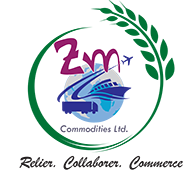How Blockchain is Transforming Asset Management Practices
Blockchain technology has been disrupting various industries, and one area where its impact has been particularly notable is asset management. Asset management involves the professional management of assets such as stocks, bonds, real estate, and commodities, with the aim of maximizing returns for investors. Traditionally, asset management has been a complex and time-consuming process, involving multiple intermediaries, manual record-keeping, and high fees. However, with the advent of blockchain technology, asset management practices are undergoing a radical transformation.
Blockchain is a decentralized, distributed ledger technology that enables secure and transparent record-keeping of transactions. It eliminates the need for intermediaries such as banks and brokers, as transactions are verified and recorded by a network of computers, or nodes, on the blockchain. This not only reduces costs but also increases the efficiency and reliability of asset management processes.
One of the key ways in which blockchain is transforming asset management practices is through the creation of digital assets. Digital assets are assets that exist in digital form on the blockchain, such as cryptocurrencies, tokens, and smart contracts. These digital assets can be traded and exchanged on decentralized platforms, without the need for traditional intermediaries.
Blockchain also enables fractional ownership of assets, allowing investors to own a fraction of an asset rather than the whole thing. This opens up new opportunities for investors to diversify their portfolios and invest in assets that were previously out of reach.
Smart contracts, another key feature of blockchain technology, are self-executing contracts with the terms of the agreement directly written into code. Smart contracts automate the execution of transactions and ensure that agreements are enforced without the need for intermediaries. This not only reduces the risk of fraud but also streamlines the asset management process.
Blockchain technology also Stock Wave AI enhances transparency and security in asset management practices. Since transactions are recorded on a tamper-proof ledger, investors can verify the authenticity of transactions and track the ownership of assets in real-time. This reduces the risk of fraud and increases trust between investors and asset managers.
Furthermore, blockchain enables real-time settlement of transactions, reducing the time it takes to process trades and improving liquidity in the market. This instant settlement also reduces counterparty risk and eliminates the need for clearinghouses and custodians.
In addition to improving efficiency and reducing costs, blockchain technology also opens up new avenues for innovation in asset management. For example, the use of artificial intelligence and machine learning algorithms can analyze data on the blockchain to identify investment opportunities and optimize portfolio performance.
Despite the numerous benefits of blockchain technology, there are still challenges that need to be addressed before it can be widely adopted in asset management practices. These challenges include regulatory uncertainties, scalability issues, and the need for industry-wide standards and interoperability.
In conclusion, blockchain technology is revolutionizing asset management practices by enabling digital assets, fractional ownership, smart contracts, transparency, security, and real-time settlement. While there are still challenges to overcome, the potential benefits of blockchain in asset management are clear. As the technology continues to evolve, it is likely to become an integral part of the asset management industry, transforming the way assets are managed and traded.
